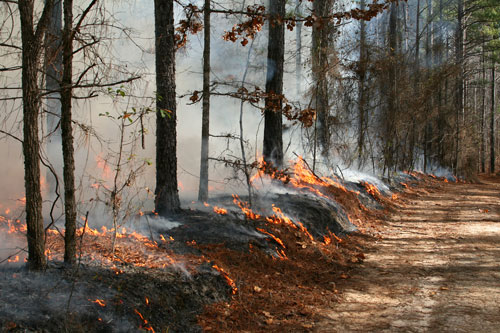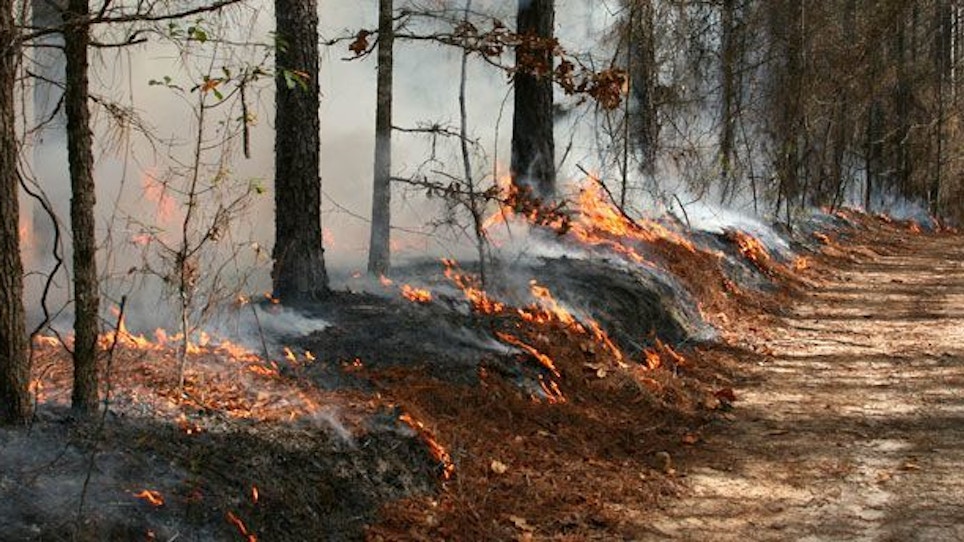 Q: What is a prescribed fire?
Q: What is a prescribed fire?
A: Prescribed fires are safe and manageable fires that are set intentionally under desirable conditions to burn forest debris, control understory vegetation, and manage native grasslands. Without prescribed fire, unwanted plants and trees will overtake the forest floor and grasslands. The absence of prescribed fire allows hazardous fuels to build up causing the forest floor to become susceptible to devastating wildfires.
Q: How are prescribed burns conducted?
A: Some prescribed burns are ignited by dropping ping-pong balls from helicopters. These ignite on impact. Other fires are lit from ground level using drip torches . [The] fires are closely monitored by trained land managers to ensure the fires are effective and safe.
Q: How are prescribed fires different from fires that cause damage to homes and property?
A: Wildfires cause damage to thousands of acres and devastate homes every year. When ignited, these fires are difficult to control due to unfavorable weather conditions, including low humidity, high temperature and high winds, and unnatural fuel loads . Prescribed fires are conducted when weather conditions are favorable, which include high humidity, low temperature, and low winds and are less likely than wildfires to spread.
Q: With wild turkey hens nesting in the spring, why would land managers burn in areas where wild turkey nests may be destroyed?
A: Growing season burns are often a controversial topic because wild turkey hens nest in the spring, and their nests may be destroyed during a burn. Some believe nest loss will harm turkey populations, but the benefits of improved habitat far outweigh the few destroyed nests. In fact, even if a nest is lost, up to two-thirds of hens will likely re-nest.
Q: In what ways do prescribed burns help wildlife?
A: Fire is a wonderful tool, and a natural part of life. It removes fuel that causes wildfires and clears the ground so native grasses and plants that benefit wildlife can grow. It also prevents woody vegetation from overtaking a forest floor, which would prevent wildlife from nesting and foraging for food. …If used properly, prescribed fire is one of the most beneficial and cost-effective habitat management tools available to land managers. Some populations of birds, mammals, reptiles and amphibians have declined in the absence of fire. Prescribed fire maintains early stages of plant succession that many game and threatened and endangered species require.
Q: Is it true that wildlife avoid areas that have been burned?
A: Many species of wildlife depend on prescribed fire to provide suitable habitat. Turkeys, deer, and other wildlife are often observed feeding in blackened fields even as the ashes are still smoldering.
For more information about turkeys, turkey hunting, and conservation, visit the NWTF website at www.nwtf.org.






